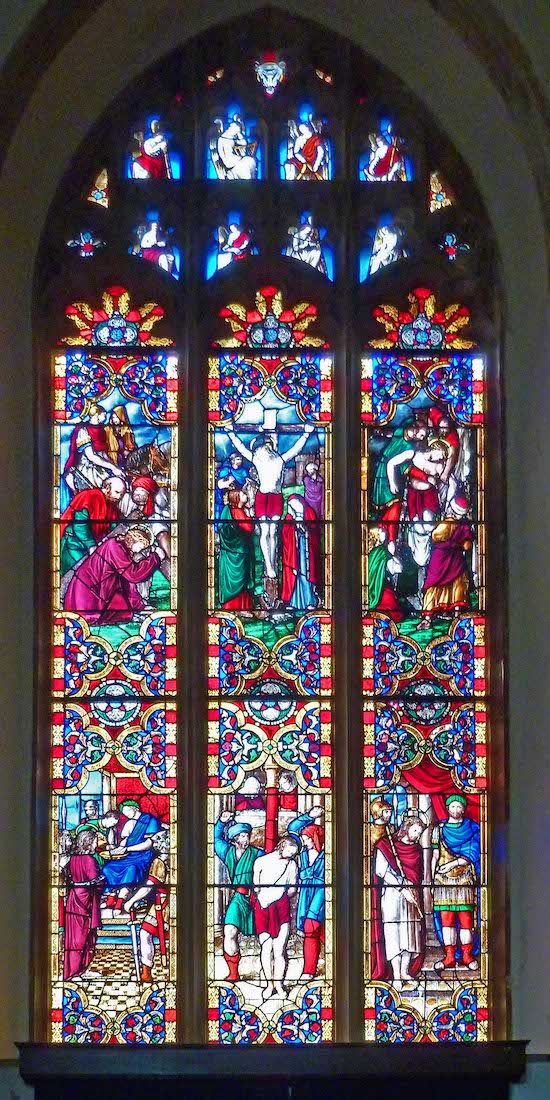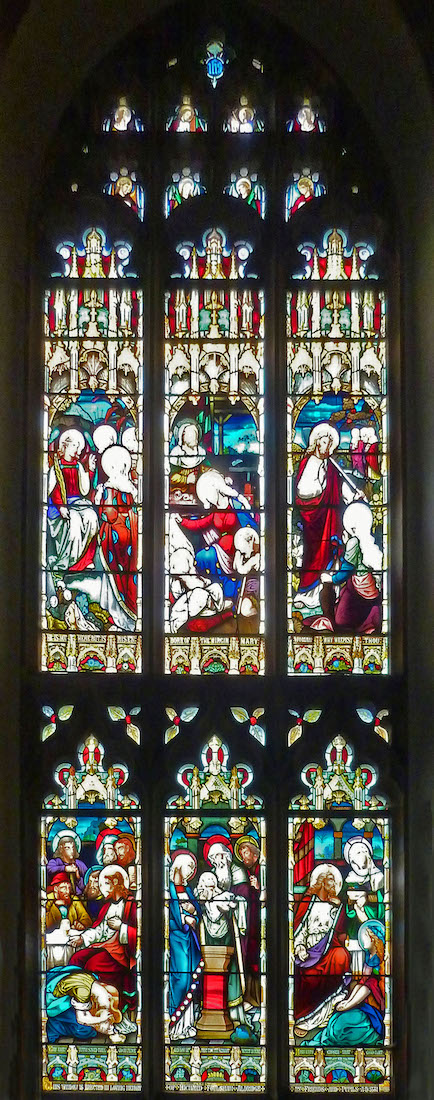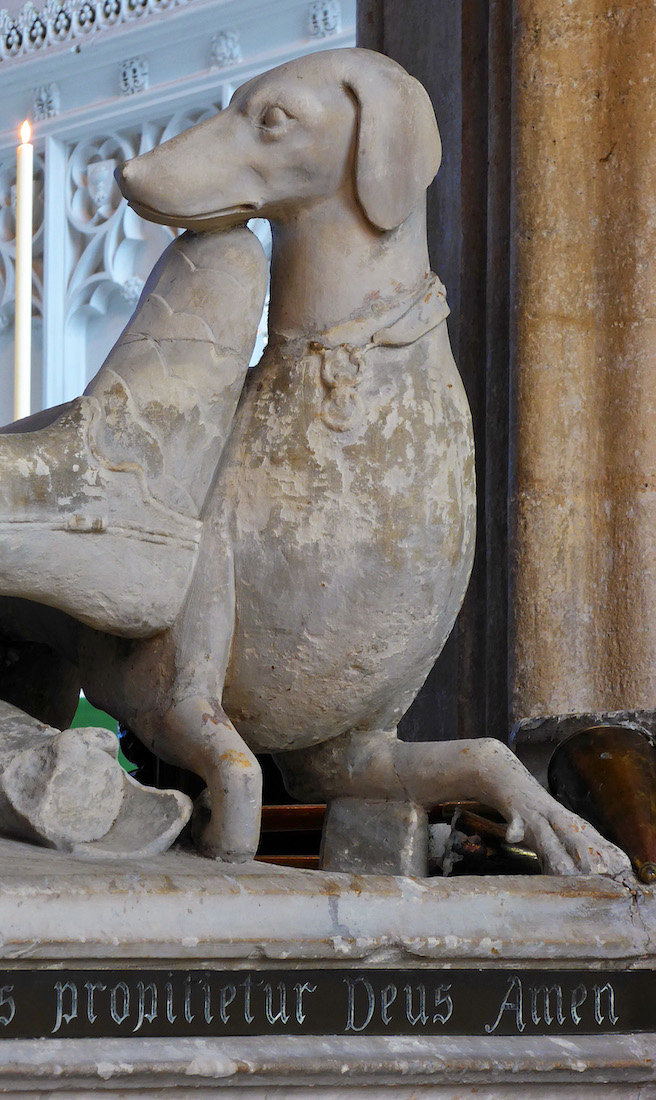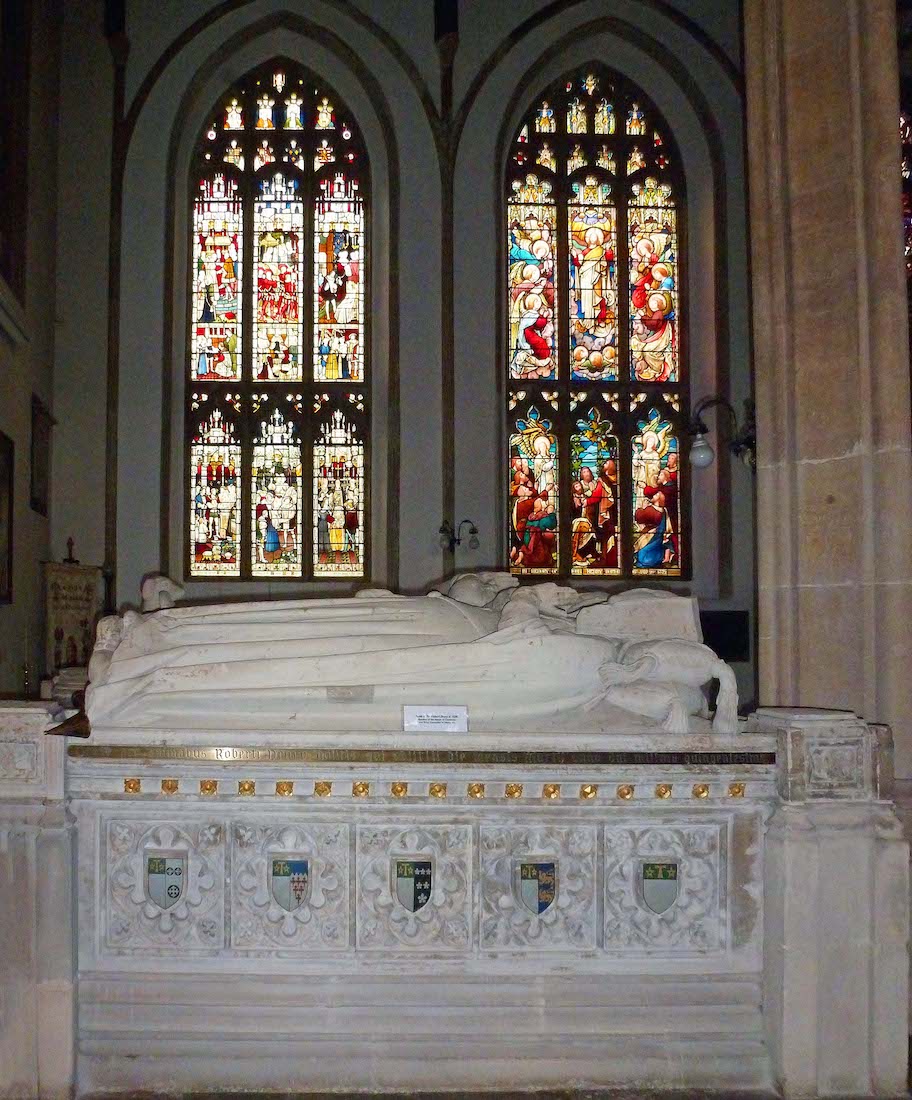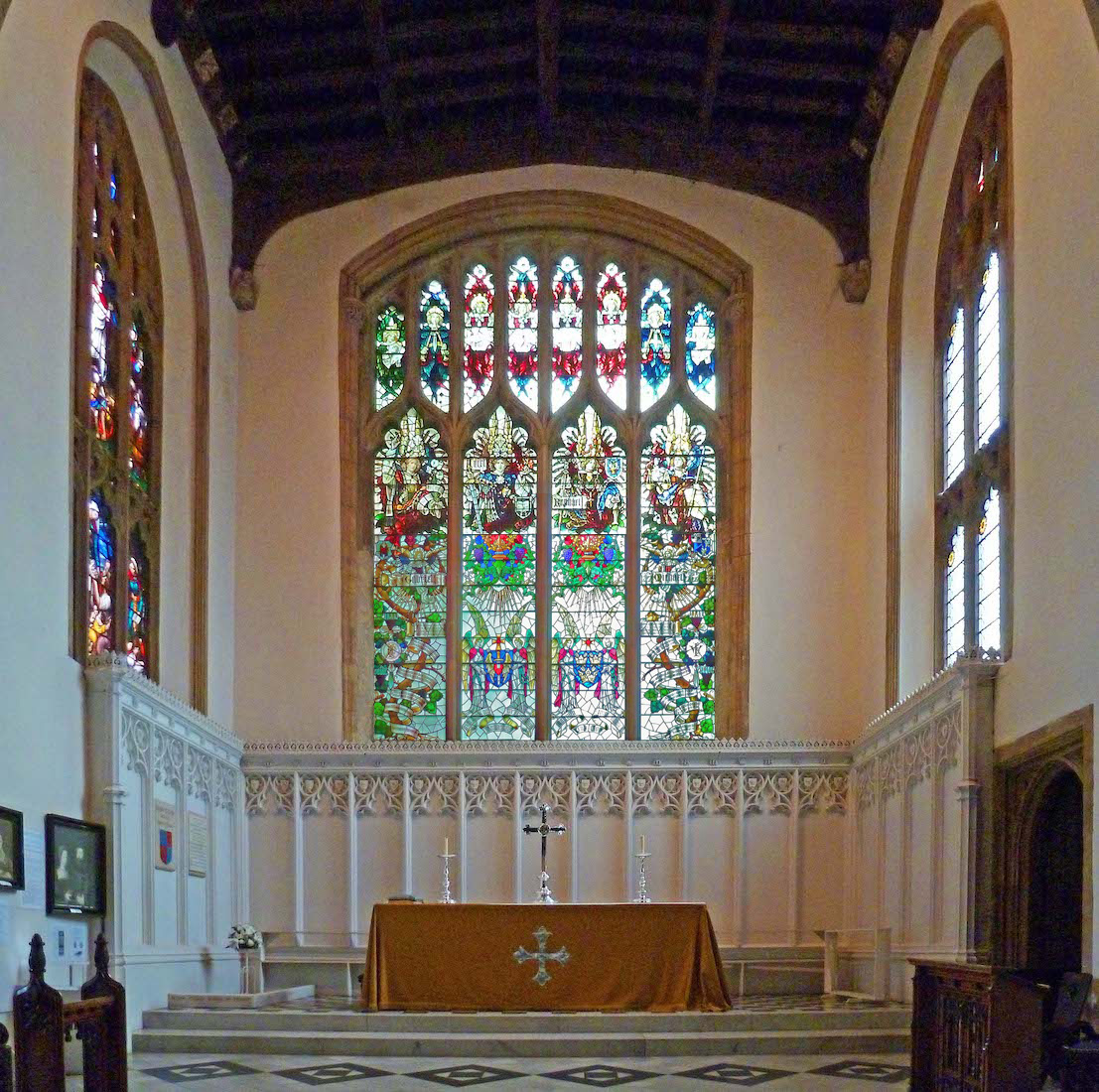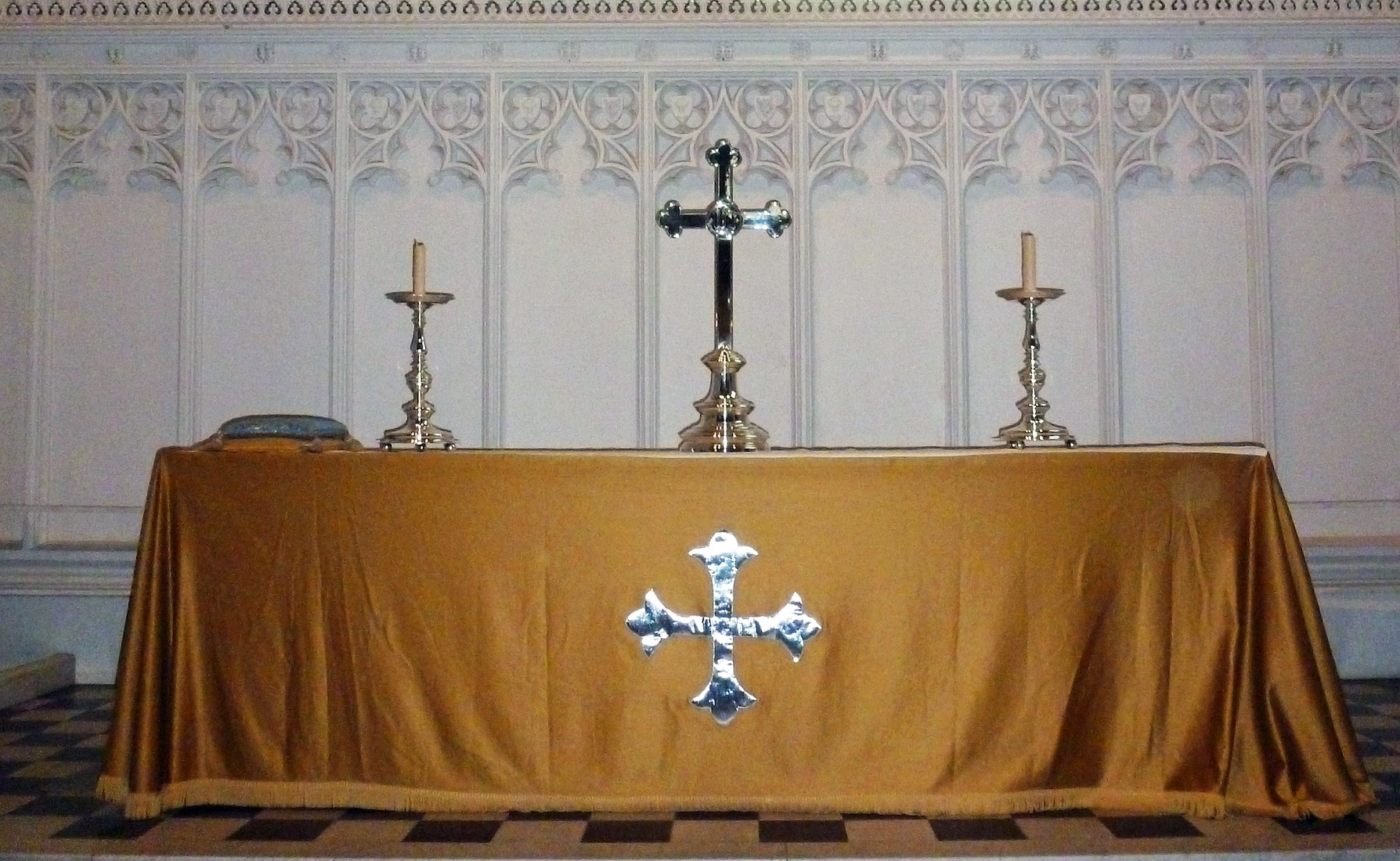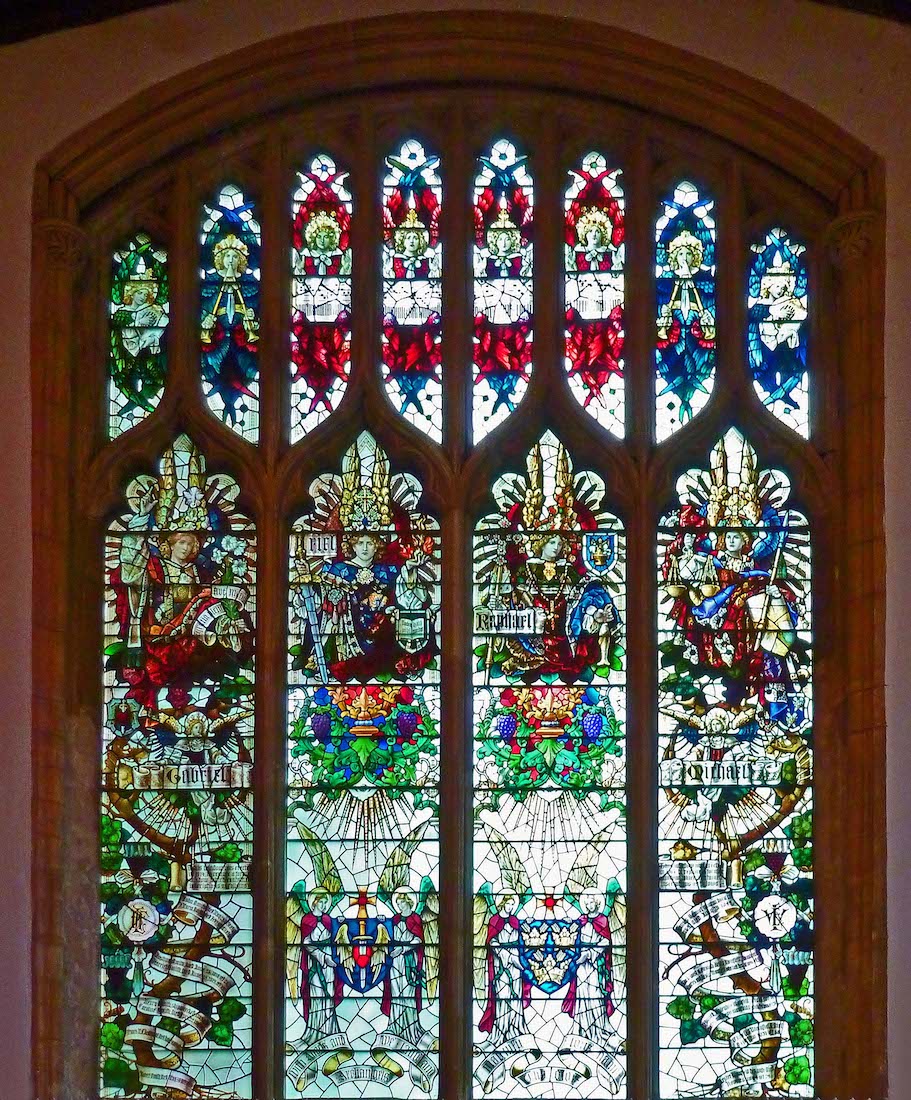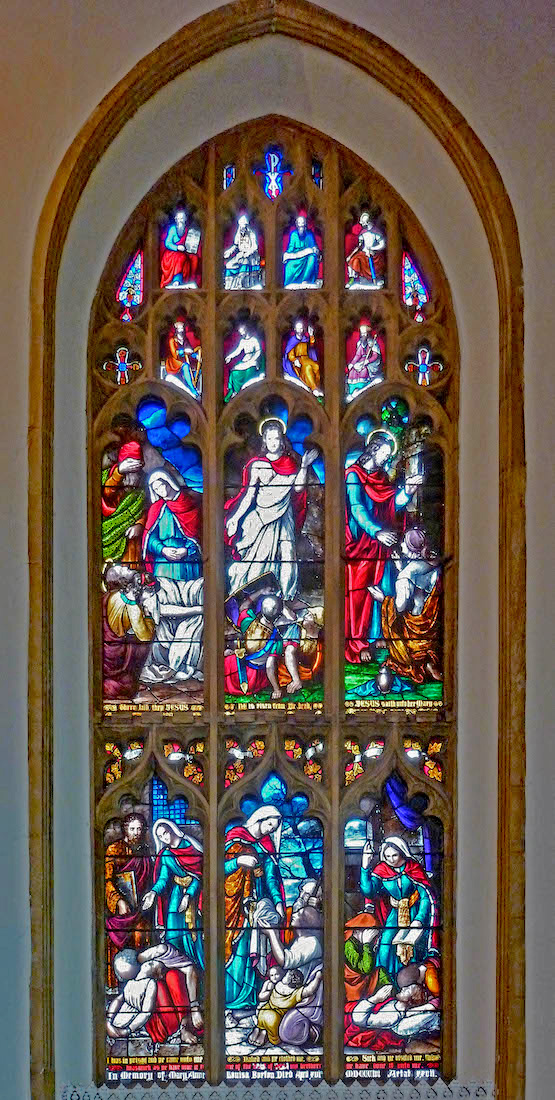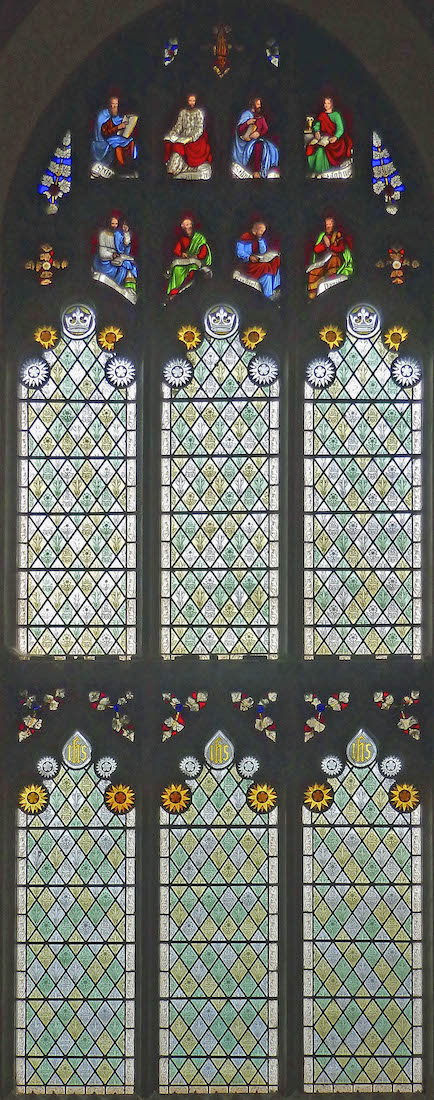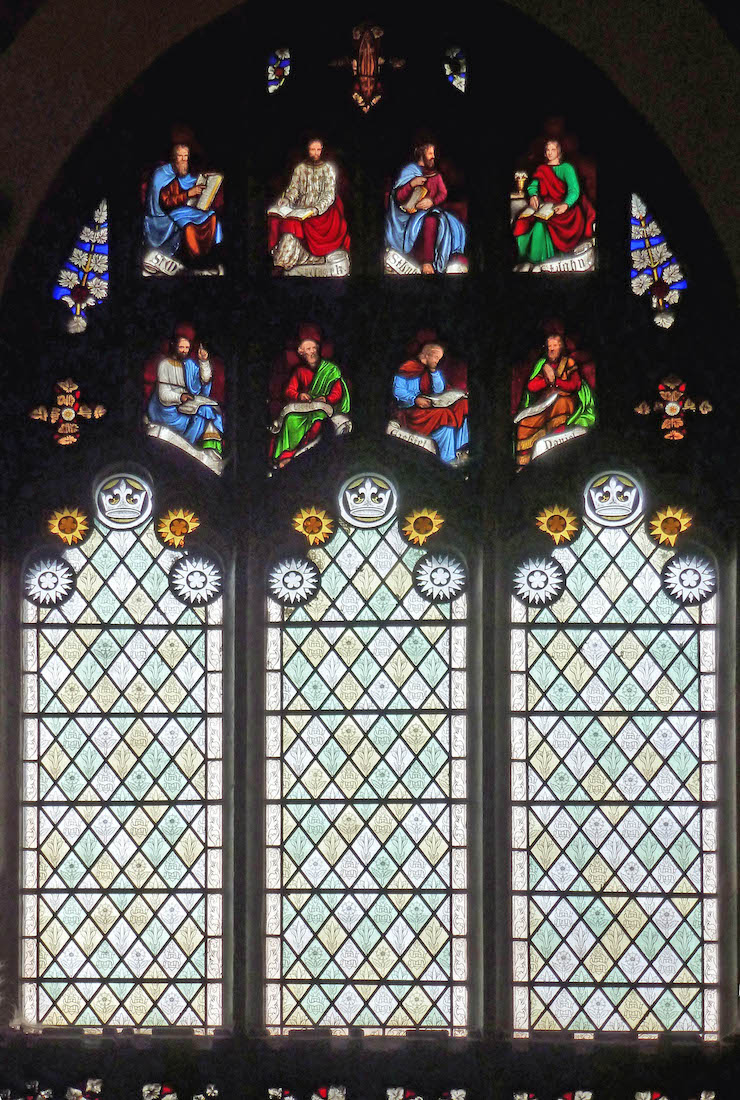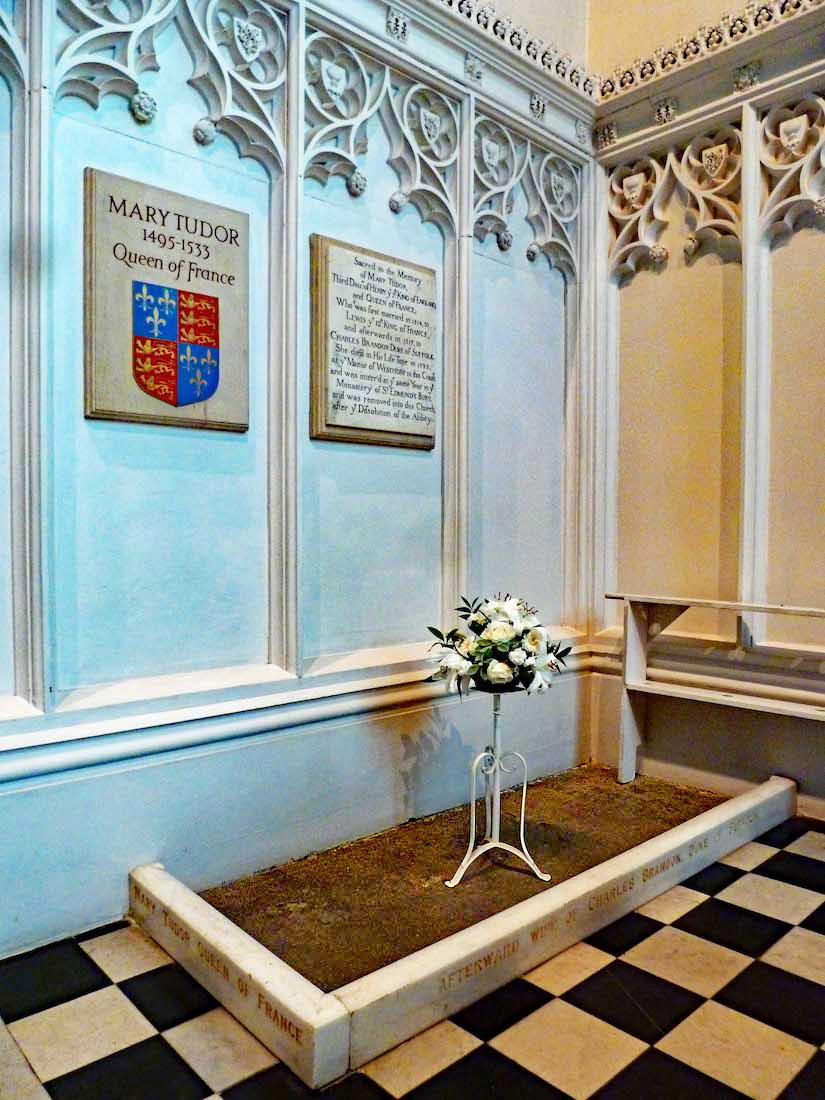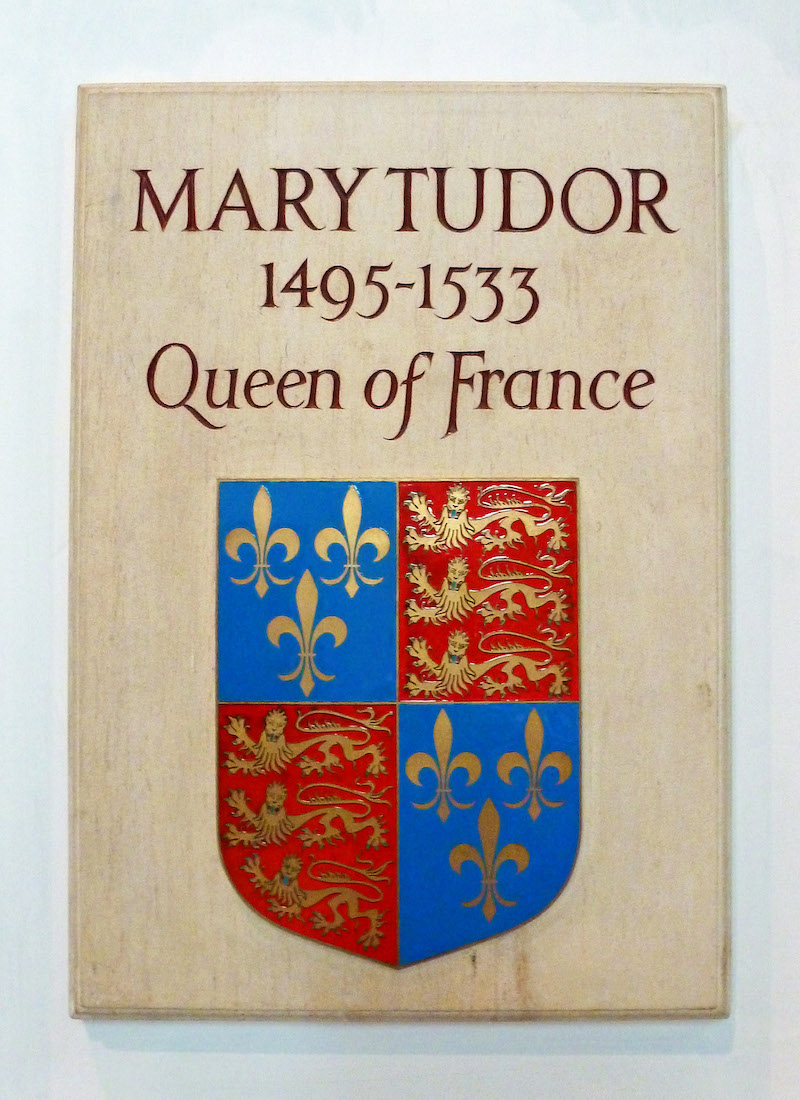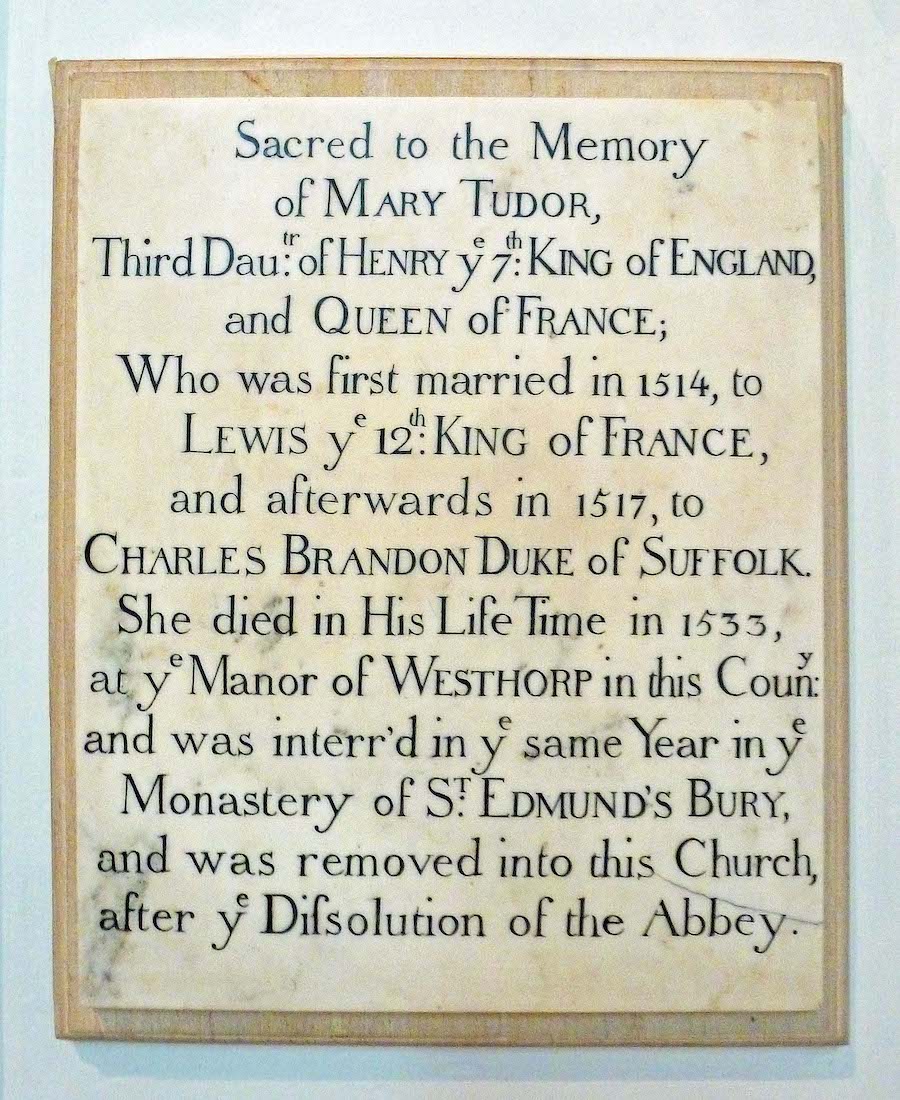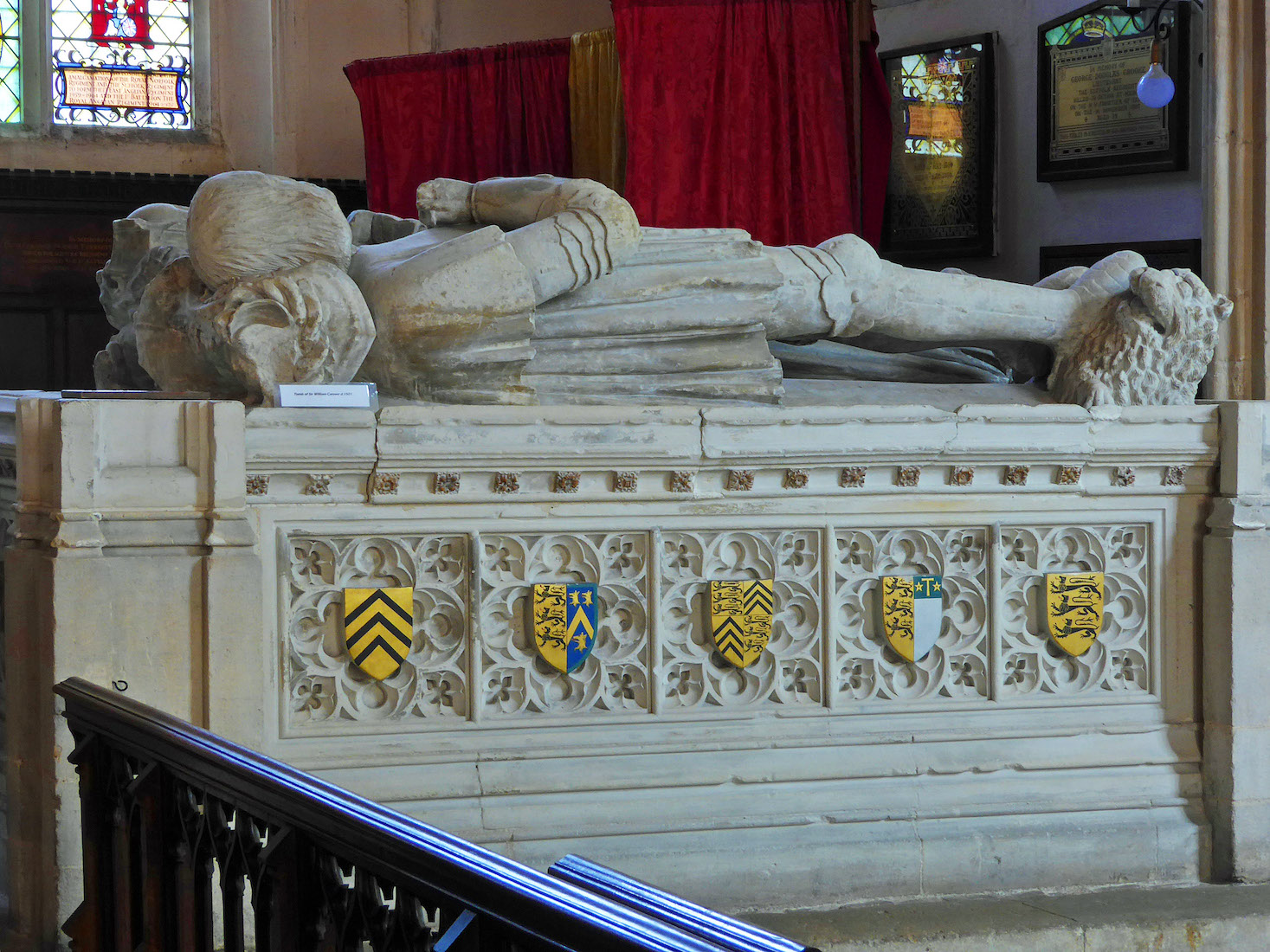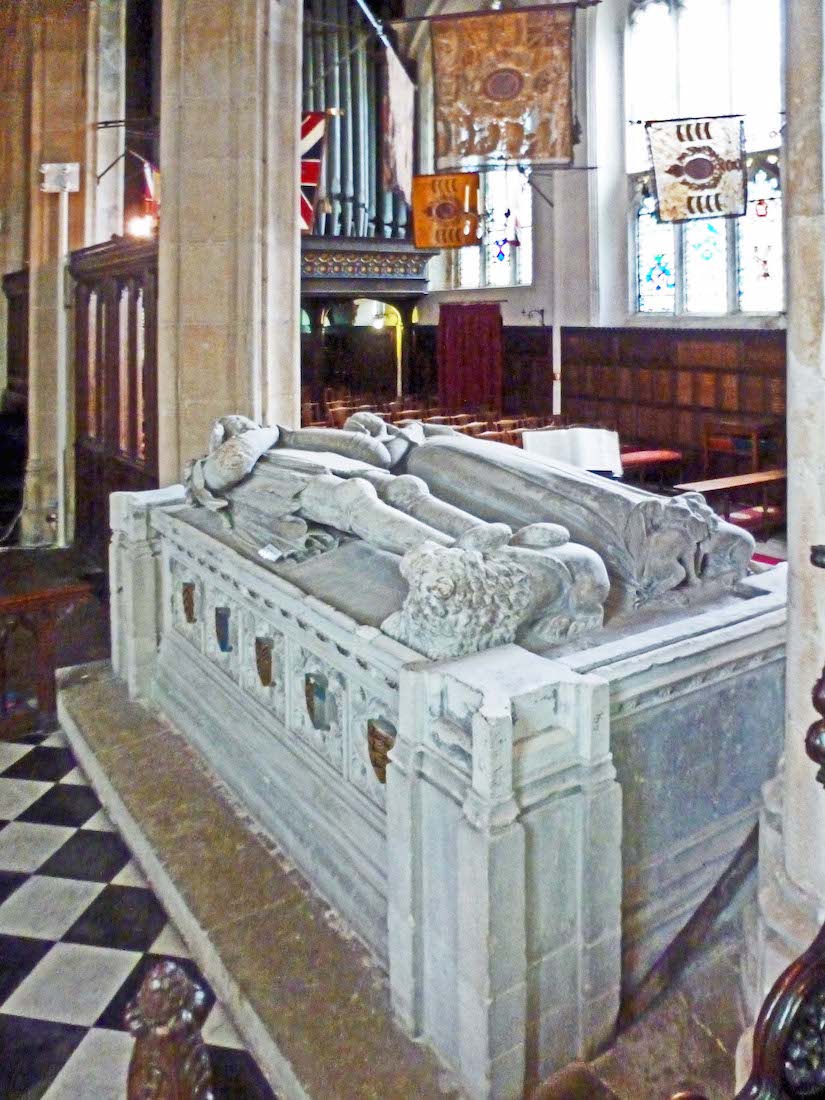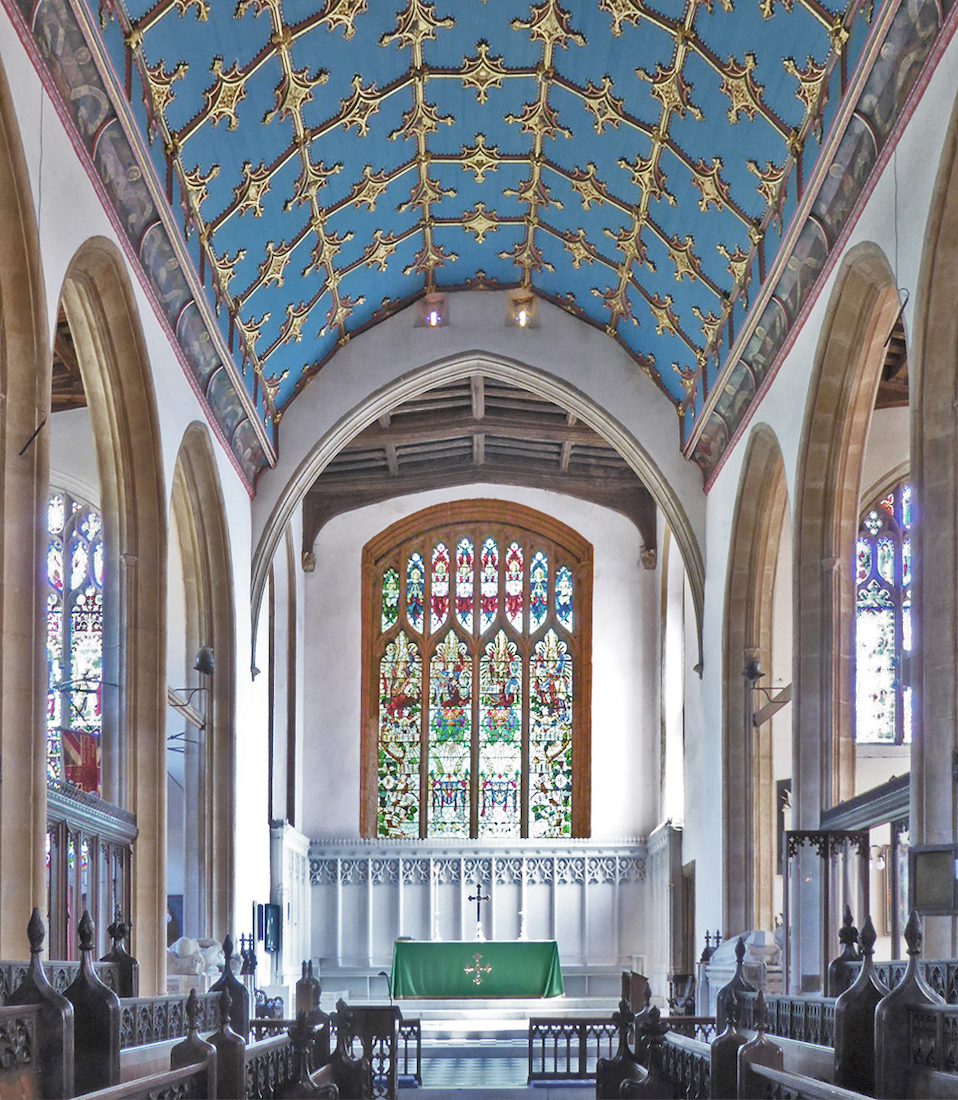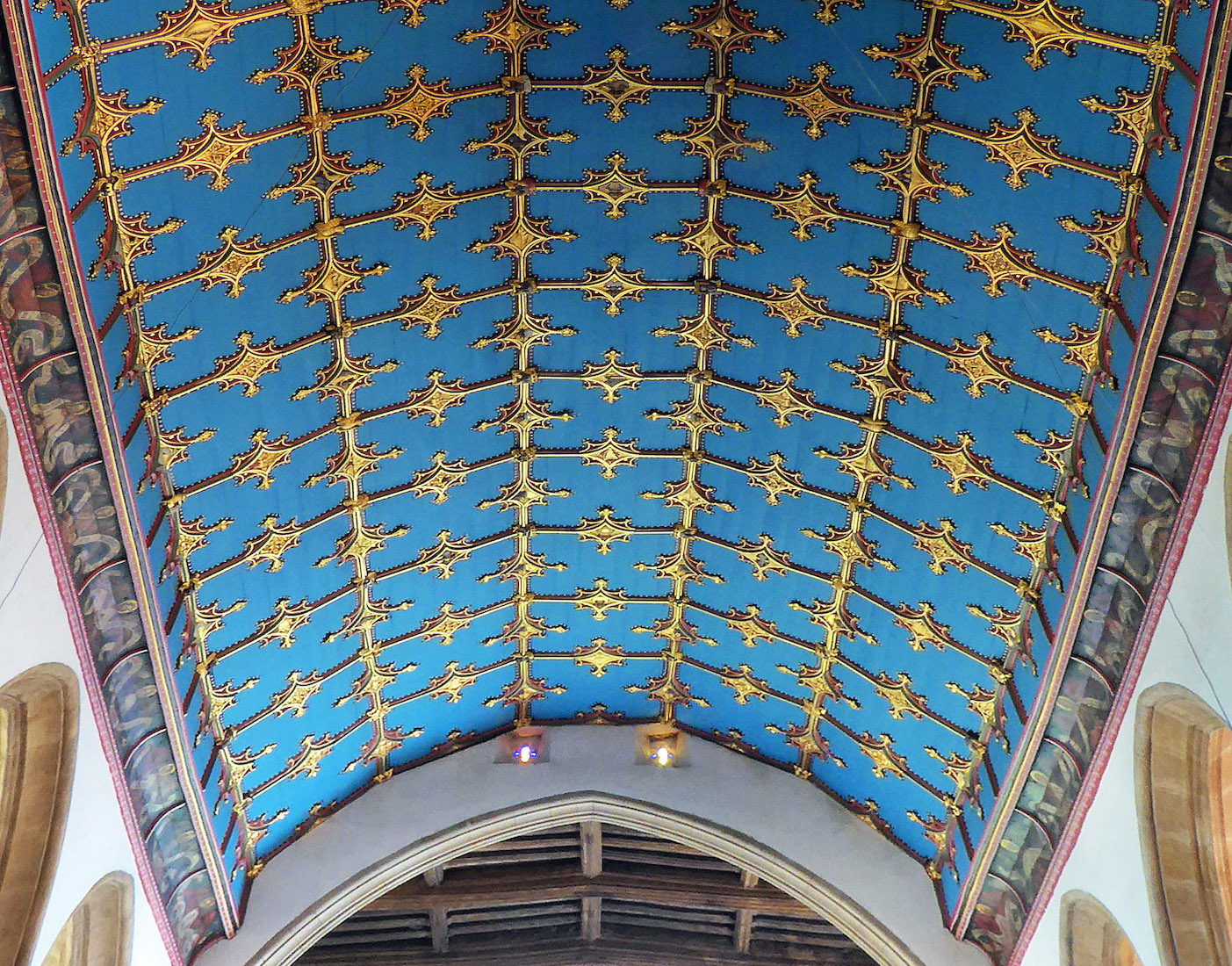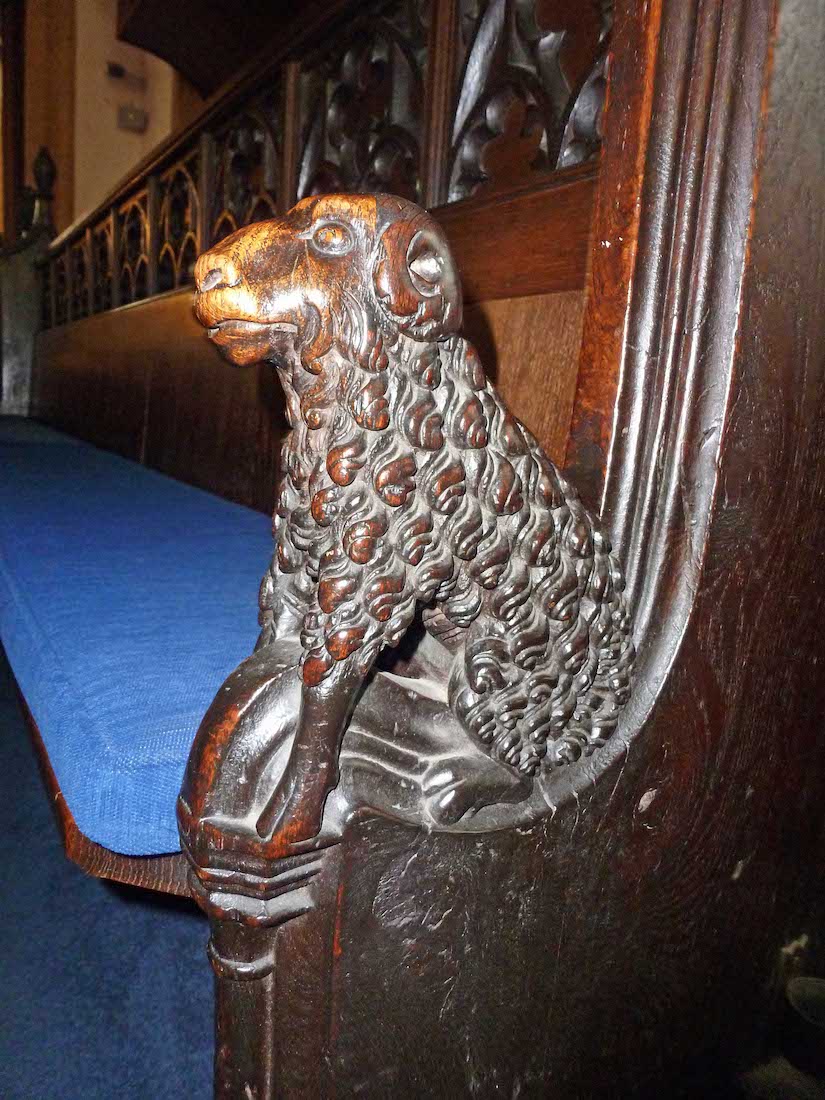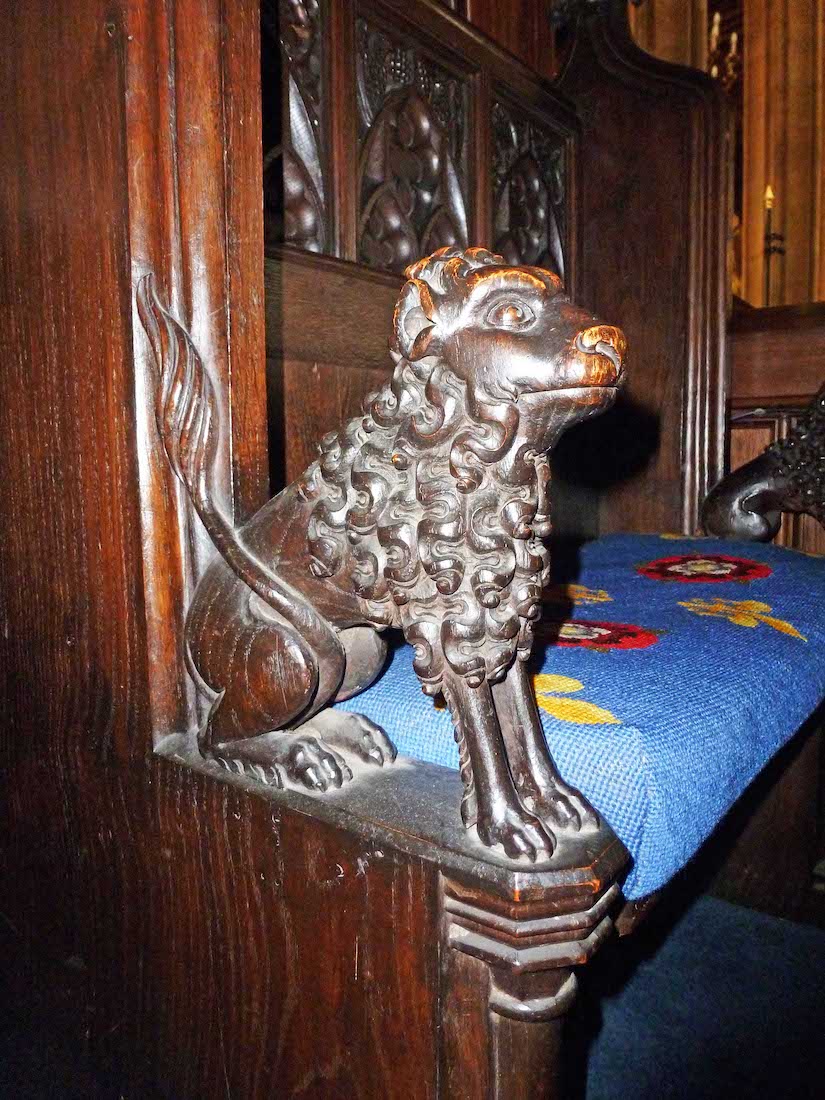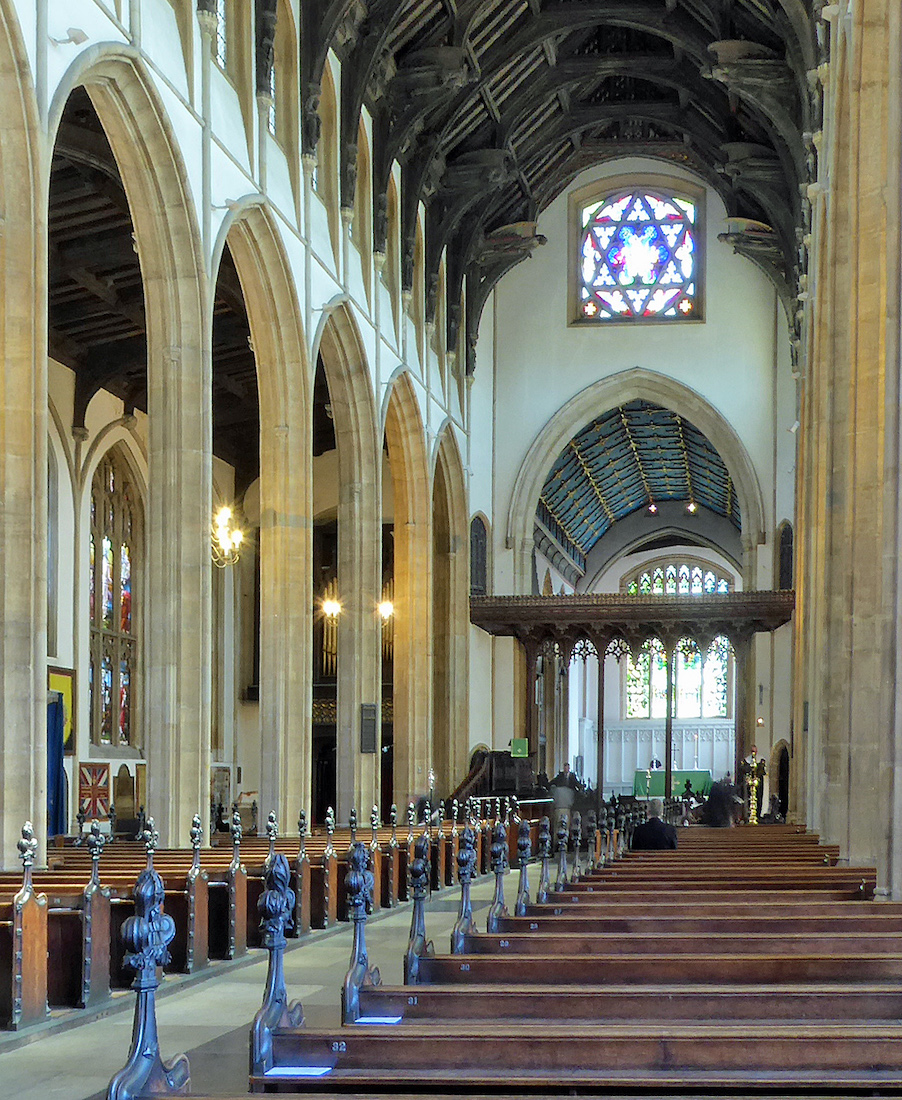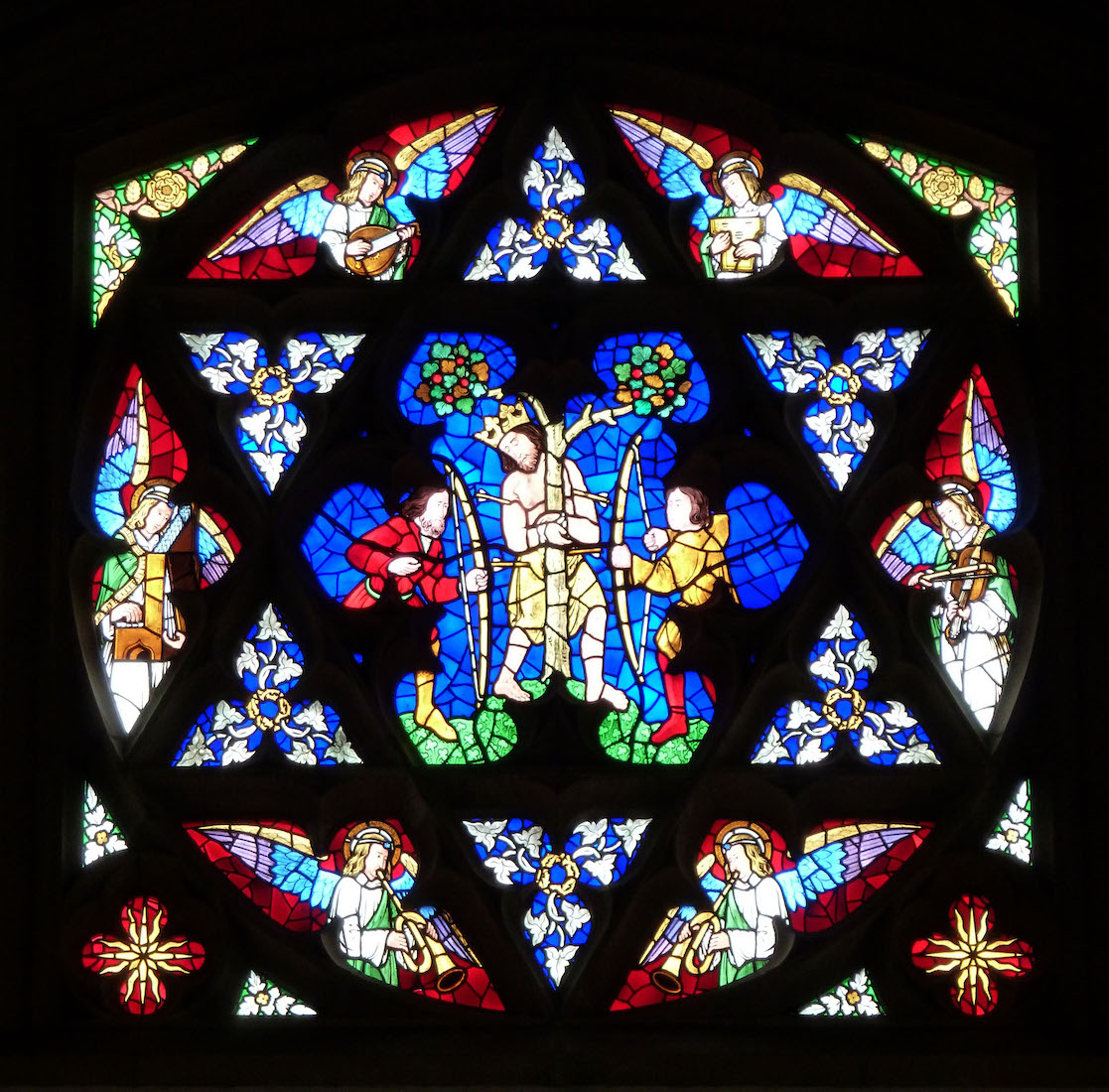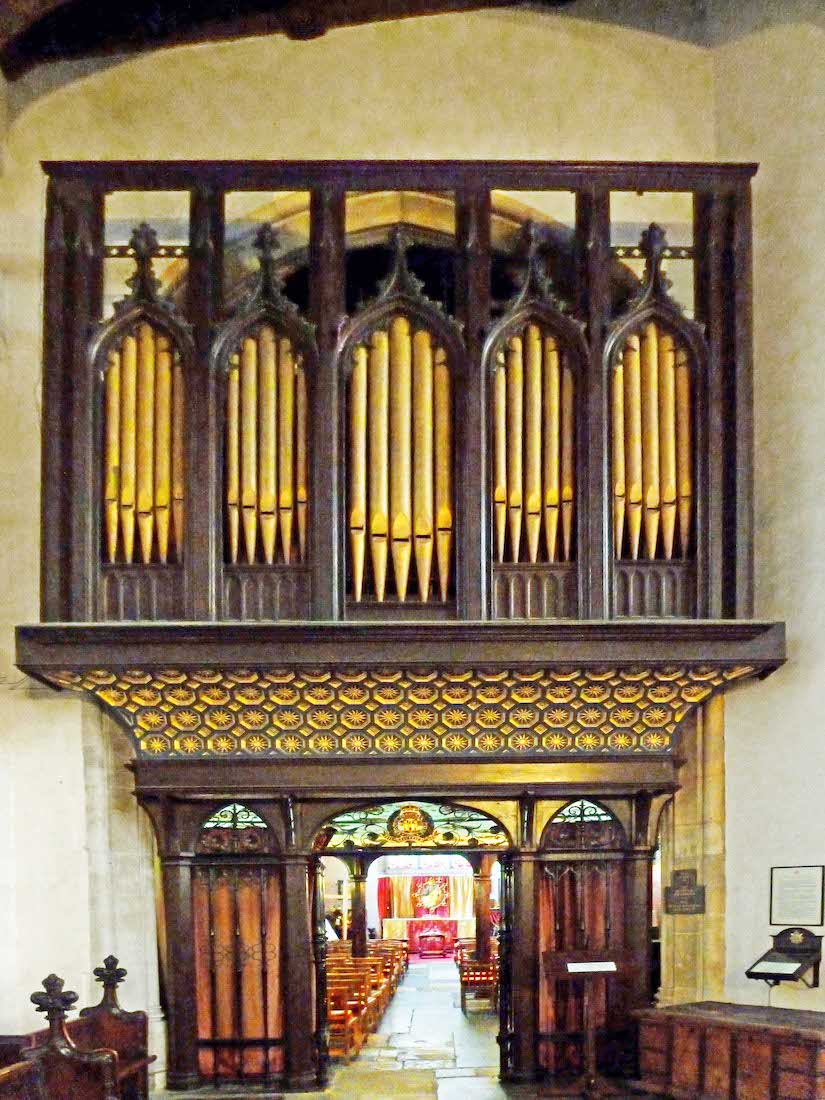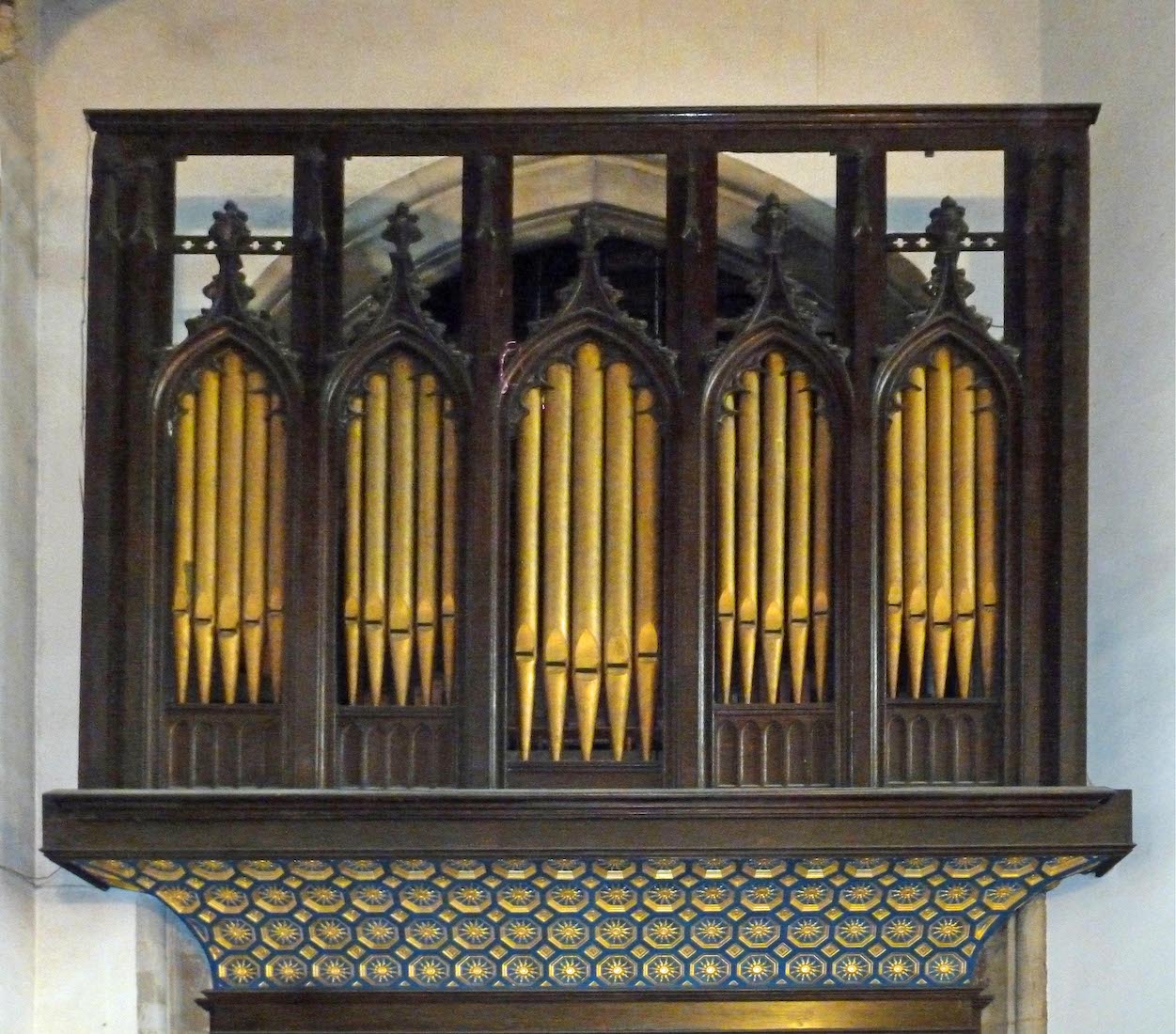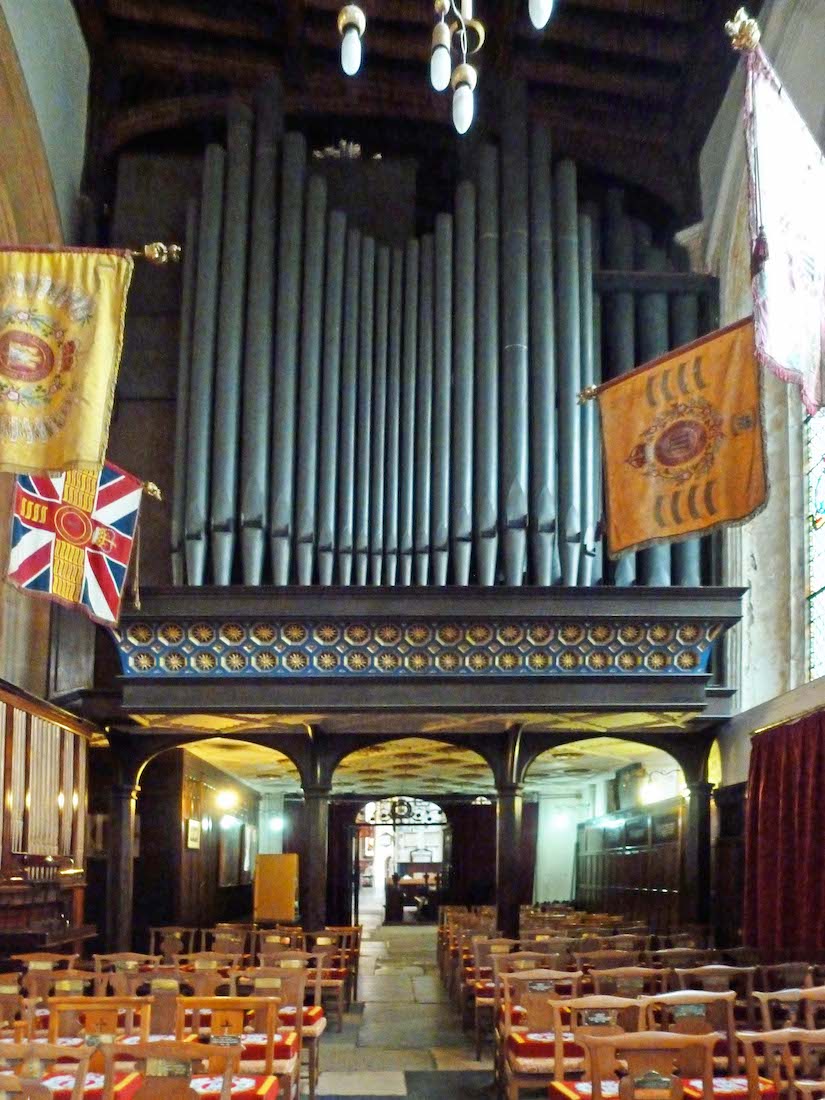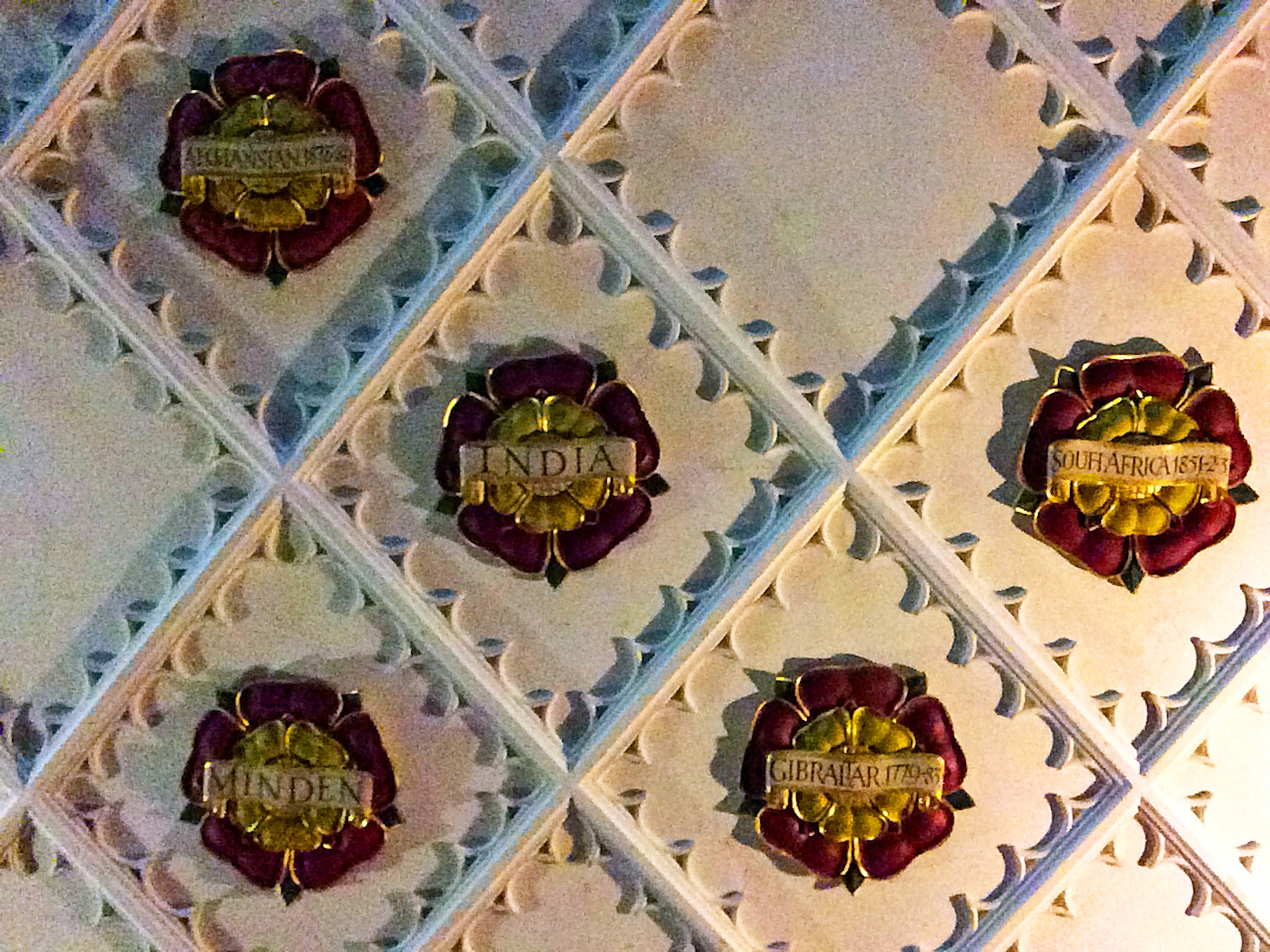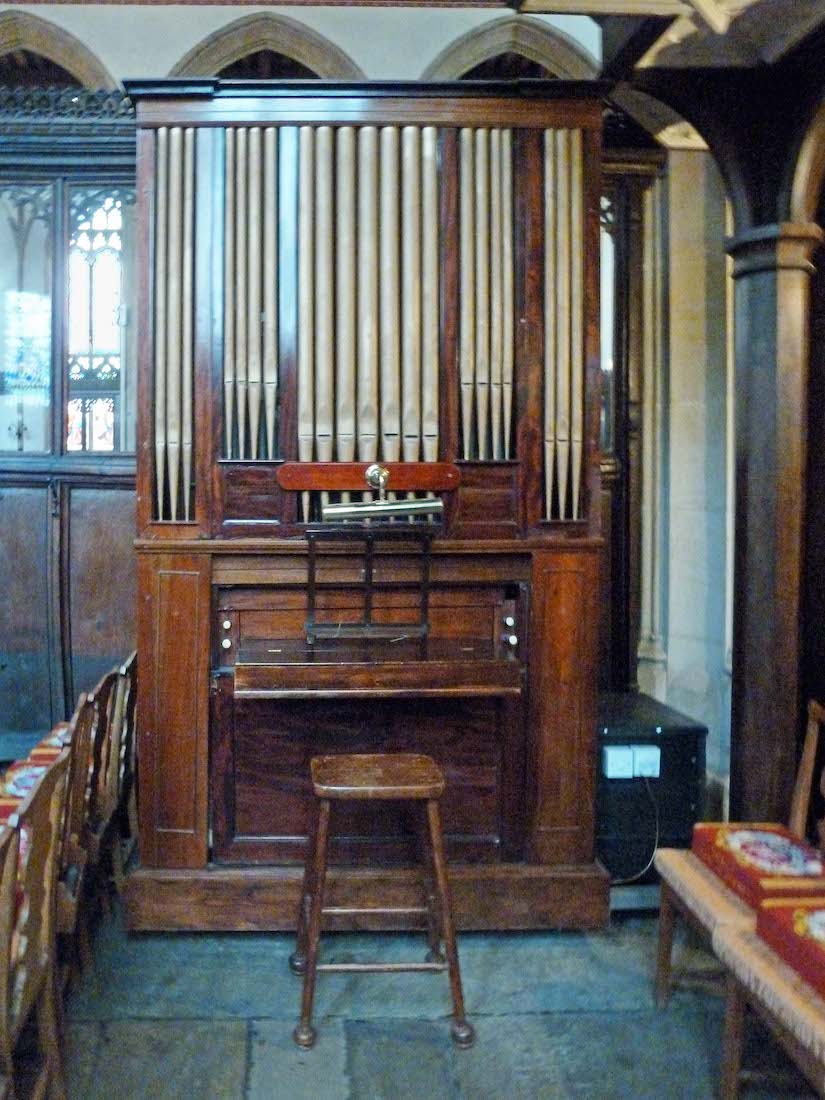42. DRURY TOMB AND BRASS RUBBING GA AMT
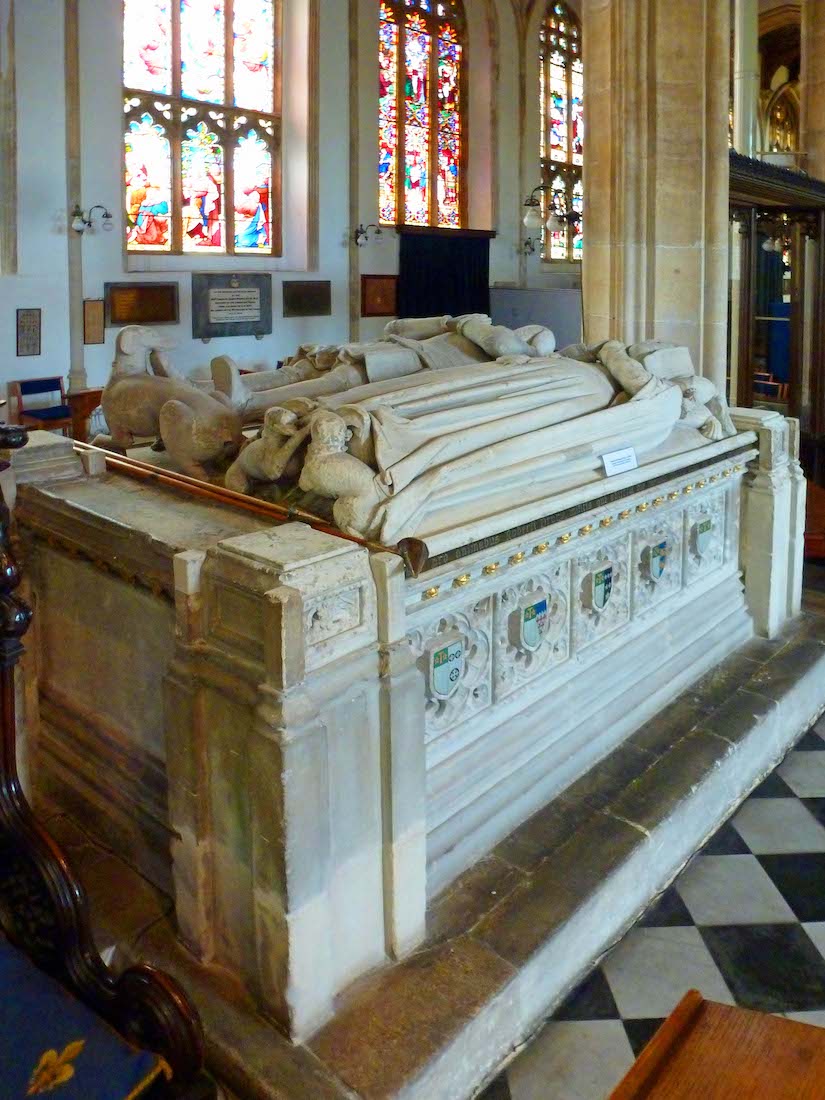
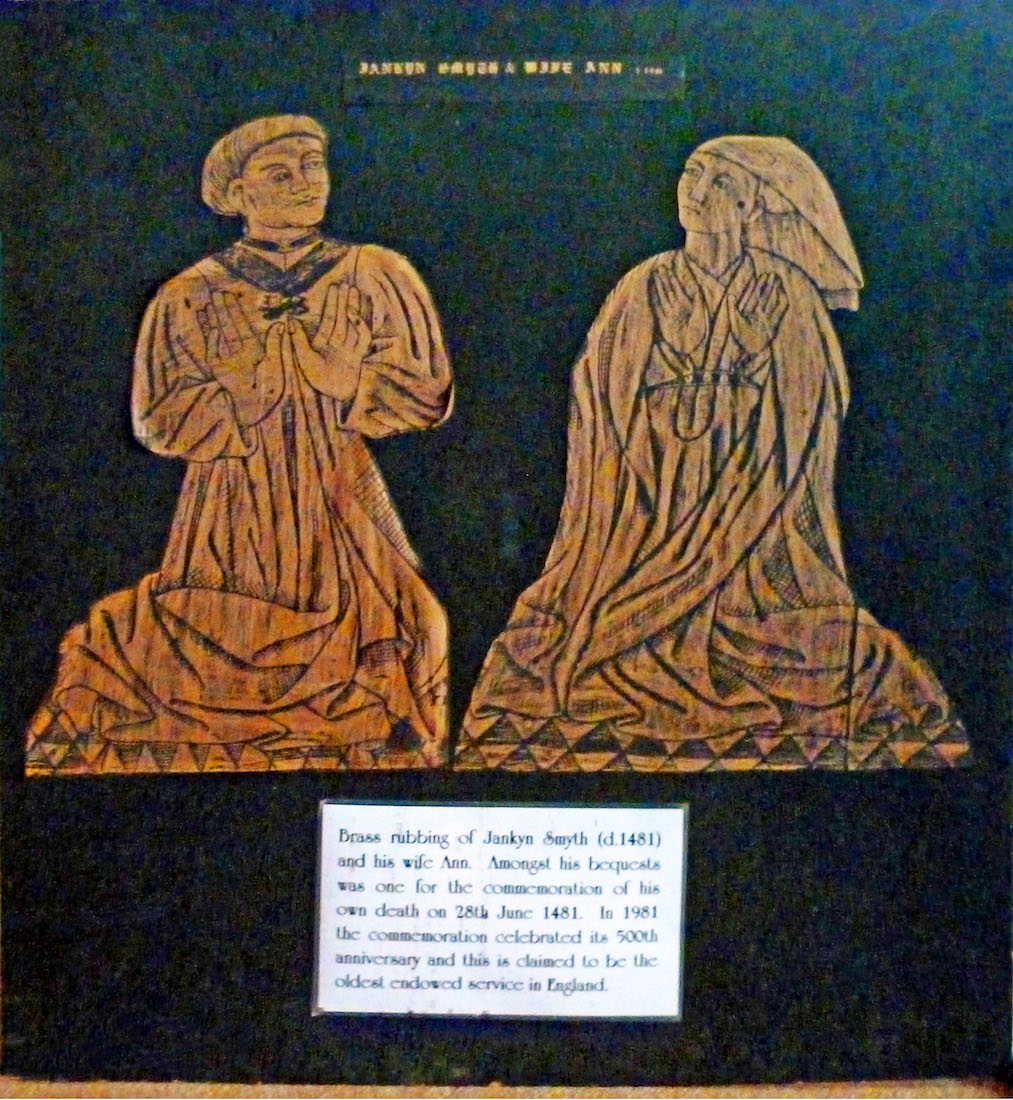
Of interest to Drewry descendants are the magnificent tombs of Sir Robert Drury and his wife, Anne, and of Sir William Carewe and his wife, Joan, the daughter of Henry Drury. The tombs are located on each side of the sanctuary just beyond the chancel, with the Drury tomb on the South side. Close to this tomb is displayed a brass rubbing of Jankyn Smyth (died 1481) and his wife Ann. The accompanying information gives details of the oldest endowed service in England. It is thought that Jankyn Smith paid for the Chapel.
43. DRURY TOMB AMT GA
This is a view from the sanctuary side. Sir Robert was elected Speaker of the House on October 4, 1495 and Privy Councillor to Henry VII. The tomb is of elaborately carved white marble. Resting on top are the sculptured figures of Robert and his wife. A greyhound lies at Robert’s feet.
45. SANCTUARY ALTAR II GA
The altar, with its plain frontal and silver cross and candlesticks, is quite dramatic.
46. EAST WINDOW GA
The East window is by Percy Bacon and dates from 1914. It replaces glass of 1847 by William Wailes. At top are the four Archangels: Gabriel, Uriel, Raphael and Michael. The two pairs of angels in the central lower lights are by Greyfriars and were added in 1964.
47. SANCTUARY NORTH WINDOW GA
This window to the North is by Clutterbuck and dated 1857. The text describes the scenes. Top row: There laid they Jesus ... He is risen from the dead ... Jesus saith unto her, Mary. Bottom row: I was in prison nad ye came unto me ... Naked and ye clothed me ... Sick and ye visited me. The red text says: Inasmuch as ye have done it to one of the least of these my brethren, ye have done it unto me.
48. SANCTUARY SOUTH WINDOW GA GA
The Sanctuary window to the South was by Clutterbuck and dated 1857. In 1909, all the glass was removed but the tracery. The figures depicted (top from left to right) are: St Matthew, St Mark, St Luke, St John. And the bottom row: ? , ? , Ezekiel, Daniel.
49. MARY TUDOR TOMB GA
This tomb is in the Northeast corner of the sanctuary. According to the St Mary’s Church guide book, ‘at the dissolution of Bury Abbey in 1539 her [Mary Tudor’s] tomb and body were transferred to the north side of the sanctuary of St. Mary’s. In September 1784 the tomb was dismantled, her lead coffin opened and her embalmed body revealed. Locks of her long golden hair were cut off, one of which can still be seen in the Borough Museum. She was re-buried in the sanctuary and the original tomb top, a pre-reformation altar stone with five consecration crosses, placed over the grave.’
50. MARY TUDOR GA GA
On the adjacent wall is this crest of Mary Tudor, and an old memorial plaque. Mary I (1516 – 1558), also known as Mary Tudor, and as ‘Bloody Mary’ by her Protestant opponents, was Queen of England and Ireland from July 1553 until her death in 1558. She is best known for her vigorous attempt to reverse the English Reformation, which had begun during the reign of her father, Henry VIII. Her attempt to restore to the church the property confiscated in the previous two reigns was largely thwarted by parliament, but during her five-year reign, Mary had over 280 religious dissenters burned at the stake in the Marian persecutions.
51. CAREW TOMB GA GA
Between the sanctuary and the Regimental Chapel is the Tudor memorial of Sir William and Lady Carew. Sir William Carew, 5th Baronet (c. 1690–1744) was a British politician who sat in the House of Commons from 1711 to 1744.
52. SANCTUARY – DISTANT VIEW AMT
We entered the sanctuary right near the high altar. As we step back to take a wider view, we find ourselves amongst the choir stalls. Above us is the beautifully painted blue ceiling with carved bosses.
53. CHANCEL ROOF DETAILS AMT
The chancel’s fine 15th century ceiling is of a very different design to the nave roof, and much easier to see in detail owing to its rich colouring and gilding. Paintings of angels line the edges and carved bosses abound. The paintings have been retouched but are otherwise largely original. More details of the chancel ceiling can be seen here.
54. CHOIR STALL CARVINGS GA GA
There are some fine carvings at the ends of the choir stalls. More examples can be seen here.
55. EAST NAVE AMT
We now find ourselves back in the nave, with a view of the sanctuary through the very large chancel screen. It is interesting that there is a door at each end of this screen, each having access from the door immediately below. What were these doors used for? And at the top of the chancel arch there is a colourful round window.
56. HIGH WINDOW GA
This window was Installed over the chancel arch at the 1844 restoration of the church. The glass is by Thomas Willement. It depicts the martyrdom of St Edmund, who is surrounded by musical angels. Poor St Edmund!
57. ORGAN GA
We now return to the Northeast corner of the nave, near the cenotaph. From here we can see beneath the large stand of organ pipes into the Anglian Regimental Chapel.
58. ORGAN PIPES GA
There is evidence for an organ in St Mary’s as early as 1467, in the will of John Baret which states that ‘ye pleyers at ye orgenys [to be paid] ij d’. Another bequest from 1479 grants the organist 10d. The main organ is a four-manual instrument with 79 speaking stops. It was built initially by John Gray of London in 1825, rebuilt and enlarged in 1865, 1885 and 1898 by J W Walker. There were later rebuilds by Hill, Norman and Beard in 1931, John Compton in 1959 and Kenneth Canter in 1988. The latter included providing a mobile console; we noticed this near Baret’s Tomb.
59. UNDER THE ORGAN GA GA
We walk under the stand of organ pipes, and here look back from within the Chapel. Now called the Royal Anglian Chapel, it was formerly the Suffolk Regimental Chapel. The name was changed after the formation of the Royal Anglian Regiment in 1964; this included the Royal Suffolk Regiment. The ceiling under the organ pipes is decorated with roses bearing the names of past battle fields. We can also notice a small organ standing to the left.
60. LITTLE CHAPEL ORGAN GA
This separate four-stop chamber organ, possibly by John Harris (son of Renatus Harris, c. 1677 – 1743) is placed in the Royal Anglian Regimental Chapel and is ideal as a continuo instrument where the main organ would be inappropriate.


